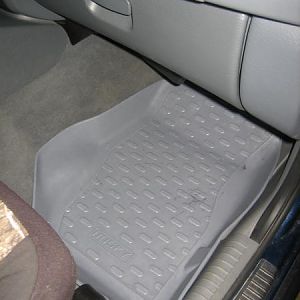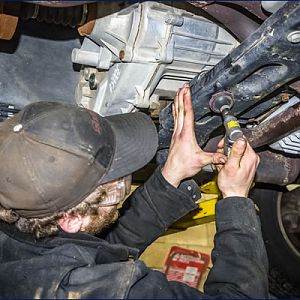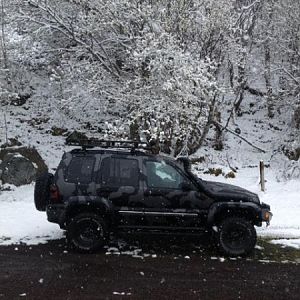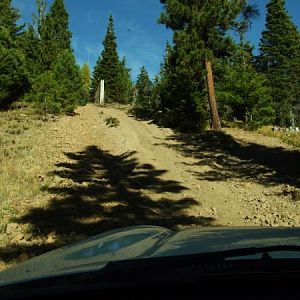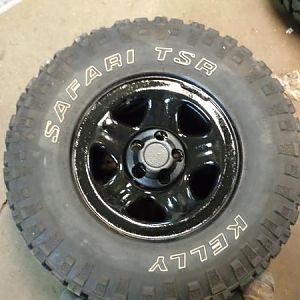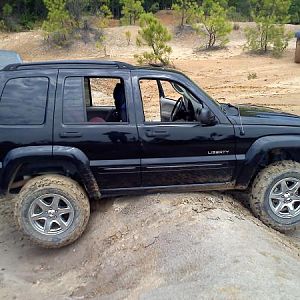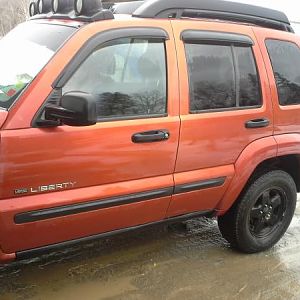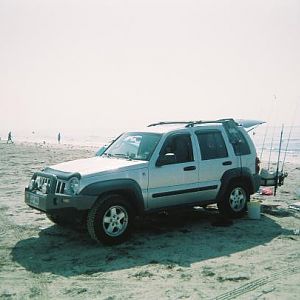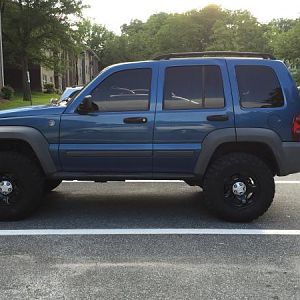Subject: PART 1: Creating ignition coil and fuel injector bypass circuits for a 2003 3.7L Liberty Sport. Content covers circuits F142 (PDC to Fuel Injectors) and A142 (PDC to Ignition coils)
If you are getting rogue/intermittent/sporadic/etc p03xx "Cylinder Misfire" codes (like I am), this may help you to isolate a problem with damaged wires. The misfire may actually be caused by a variety of things like bad sensors, fuel delivery problems, dying catalytic converters, or other problems... but I had every other one of those possibilities investigated and eliminated. The only thing left for me to investigate is the physical circuitry... if that doesn't do it then all that's left is a badly remanufactured engine.
Creating isolated circuits to bypass/replace existing ignition coil wiring, and fuel injector wiring is possible with a minimal amount of work.
Note 1: This is PART 1 of two parts. PART 1 only covers the circuitry that originates from the PDC (Power Distro Center) and terminates at the corresponding injectors and coils. PART 2 (in progress) will cover the other side of the bypass solution which originates at the PCM (Powertrain Control Module) and terminates that the corresponding injectors and coils.
Note 2: Today is 2023-Sep-8. The following is a ***Work in Progress***, so please don't take any of this as gospel until I post content with the label *Final Version*. Also, please consider this a collaborative effort so any/all input/corrections/clarifications/etc is greatly appreciated.
Note 3: Apparently the Service Manual was compiled without the benefit of either quality control or a managing editor, because there are omissions and flat out misinformation, and my goal is to spare you a lot of ratholes. I will do my best to clarify and if anyone has questions, let me know and I will help as best as I can.
Note 4: This should also work for 2002 (99% confident) and 2004 3.7L (90% confident, if someone shares the Service Manual for the 2004 I will know for sure). I do not think the type of transmission (auto/manual/4WD/2WD) makes any difference.
Note 5: The final version of this will hopefully include detailed photos, explicit manual references, vendor resources, and whatever else I can think of to smoth the path forward.
Note 6: Don't be a hack. Carelessness will leave you with a dead KJ and you'll probably have to start the whole thing over from scratch.
6.1: Use either SXL or TXL (what I'm using) wire of the correct gauge.
6.2: Make sure your connectors are weather-proof (iow, little rubber collars around the wires where they insert into the connector body).
6.3: You are running new wire anyway, so buy some decent new heat resistant tubing to protect your work.
6.4 Use Tesa harness tape #51036 for wire management and to seal the protective tubing to the connectors.
Background: For research purposes. I went to a salvage yard and carefully pulled the entire engine compartment main-trunk wiring harness (that fat black snake that wraps around the back of the engine block right below the intake manifold. This trunk line includes the following branches...
1. Bank 1 of the PCM, which is the source for the signals to 5 coils
2. Bank 2 of the PCM
3. The entire branch that goes off to the TCM
..which you do not have to do, the point is that the research is based on first-hand mechanical forensics. I have no intention of cannibalizing wiring components. This is a custom bypass exercise.
Ultimately you will need to locate the following two large 10-way connectors (using the Service Manual IDs) which are the root of two 6-way splices that complete the two circuits in focus, fuel injectors and ignition coils.
Fuel injectors from PDC, Service manual pages 8W-10-20, and 8W-80-18.
Ignition coils from PDC, pages 8W-10-21, and 8W-80-24.
As you read the following, understand that there are 4 different perspectives when considering a connector, and that a connector consists of two halves that you couple together, a male half and a female half. Yeh, you know all about this, but you don't know what a mess the Service Manual diagrams and instructions are, so I am spelling this out.
1. Male half face, this is the side of male connector half that has male pins sticking out of it
2. Male half terminals, this is the other side of the male half, opposite the male pins, where the wires go into this half.
3. Female half face, this is the side of the female half that the male half plugs into, and it has sockets for the male pins.
4. Female half terminals, this is the other side of the female half, opposite the female sockets, where the wires go into this half.
PCM side of the Fuel injector circuit:
"C103", which is in line in the F142 circuit. Location is (from driver position) right rear of engine compartment, either near or attached to the firewall. It is a 10-pin rectangular connector, 2 rows of 5 pins each.
(A) You need to isolate a single 18 gauge wire, that is insulated with an orange/dark-green color, no other wire is this color, according to the Service Manual that wire is located in connector position "1" ***of the female half of this connector***.
(B) So, leave yourself about 6-8" of whip hanging out of the female half and cut there.
(C) At this point you have now severed the 6 wires that lead to the orange/dark-green inputs on all fuel injector 2-way connectors.
(D) Lay out 6 new replacement 18 gauge wires cut to efficient lengths to reach the 6 injectors from the 10-way female connector
(E) Take 1 more 8" long piece of 18 gauge wire and splice all 6 of the branches together with this stub
(F) Splice the stub to the original 18 gauge whip that's still hanging off the female half of the 10-pin connector
(G) Splice the 6 bare ends, to each of 6 new 2-way injector connectors (recommended: Standard part #S-824) using the connector lead designated to go to the PCM. This is a Female connector half only.
PCM side of the Ignition Coil circuit:
"C112", which is in line in the A142 circuit. Location is (from driver position) left rear of engine compartment, either near or attached to the firewall. It is another (identical in appearance) 10-pin rectangular connector, 2 rows of 5 pins each.
(A) You need to isolate a single 14 gauge wire...
>>>pay attention, that's a 14 gauge wire<<<
You must use 14 gauge because anything else will have a different resistance, which can contribute to the PCM misinterpreting whether a cylinder has successfully fired. A smaller gauge can have the same effect as using cheapo wire that is not heat tolerant, or having damaged insulation, or having deteriorated stranded core.
...that is insulated with (coincidentally) an orange/dark-green color (but this one is thicker than the wires for the injectors), no other wire is this color, according to the Service Manual that wire is located in connector position "10" ***of the female half of this connector***.
(B) So, once again leave yourself about 6-8" of whip hanging out of the female half and cut there.
(C) At this point you have now severed the 6 wires that lead to the orange/dark-green inputs on all downstream ignition coil connectors.
(D) Lay out 6 new replacement 14 gauge wires cut to efficient lengths to reach the 6 ignition coils from the 10-way female connector
(E) Take 1 more 8" long piece of 14 gauge wire and splice all 6 of the branches together with this stub
(F) Splice the stub to the original 14 gauge whip that's still hanging off the female half of the 10-pin A142 circuit connector
(G.1) Splice the 6 bare ends, to each of 6 new 14 gauge socket bare ends that came with the connector kits. Recommended: Standard part #S-2087, which is a kit that you must assemble. This is a Female connector half only.
(G.2) What is important about this recommendation is that this kit comes with the connector body plus 6 individual terminal whips, three of which are 14 gauge and 3 are 16 gauge.
(G.3) ***USE THE 14 GAUGE***. In fact throw out the 16 gauge the minute you open the package so you don't accidentally use the wrong gauge.
(G.4) The ignition coil connector body has 3 empty cavities out the back. You will insert your spliced socket connectors, one per connector, into the middle cavity of each of the 6 connectors. Make sure the rubber collar is snug, be careful not to damage the insulation on the wire.
At this point all of your Power Distro Center side of the wiring is done. Part 2 will cover the PCM side.


